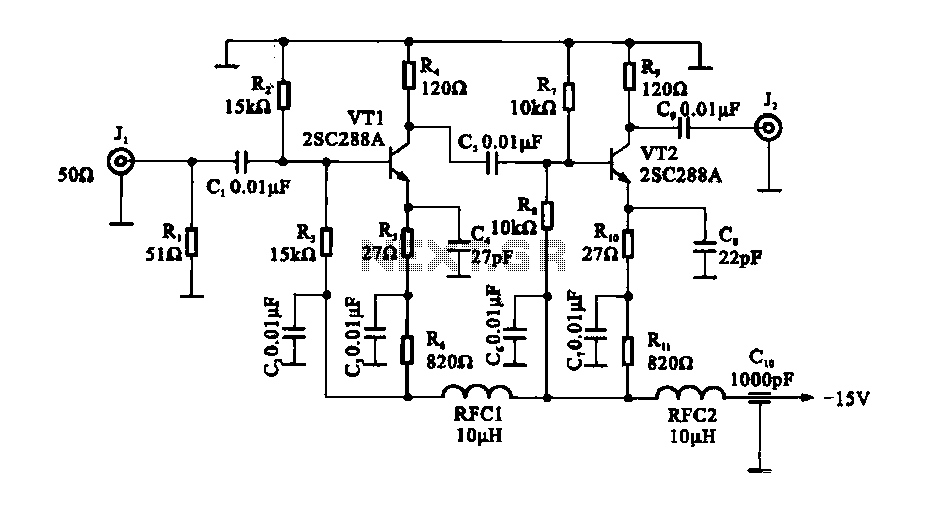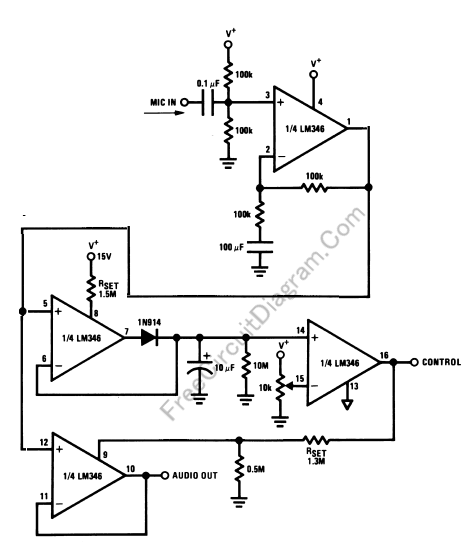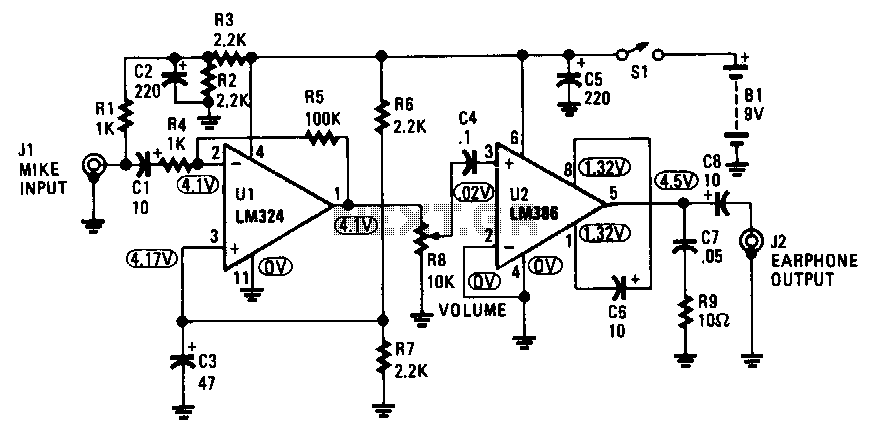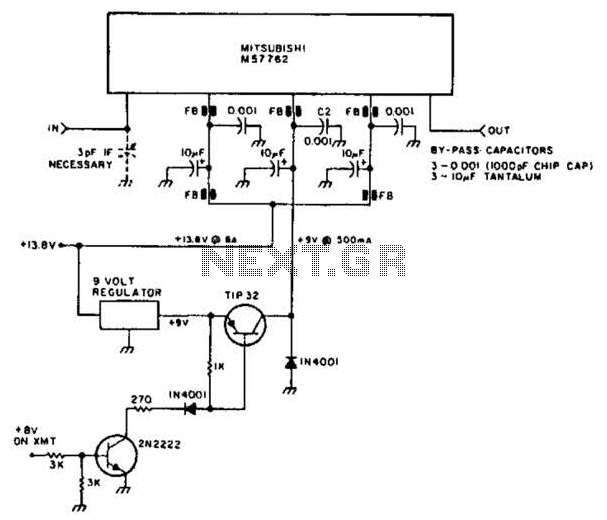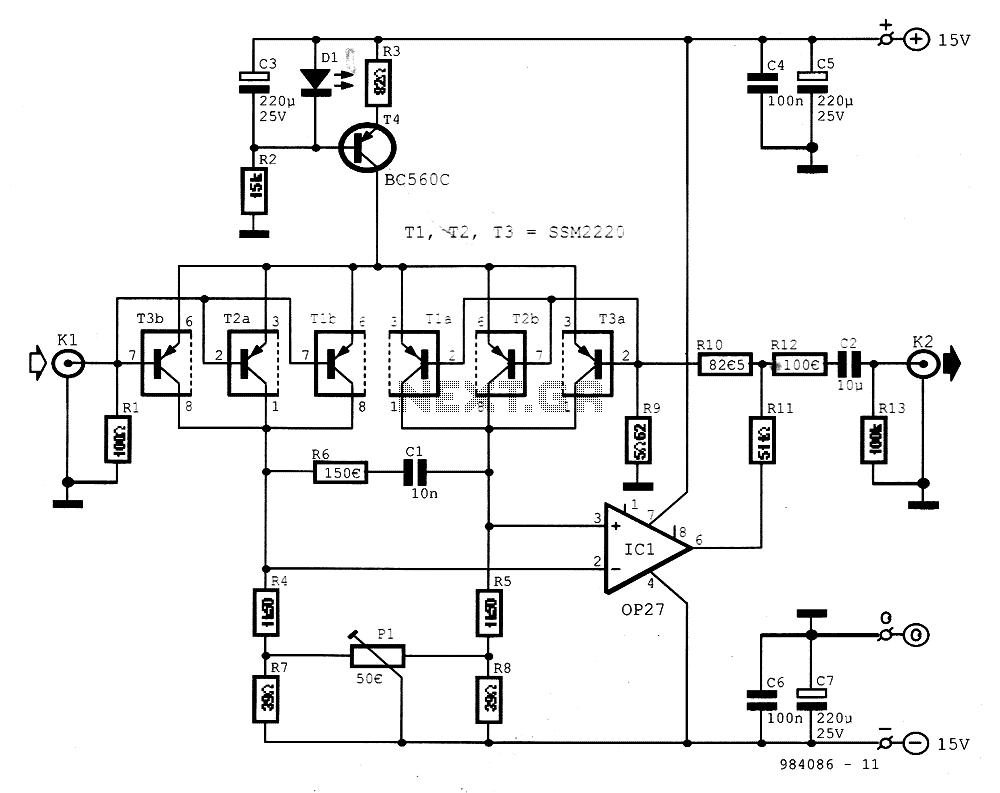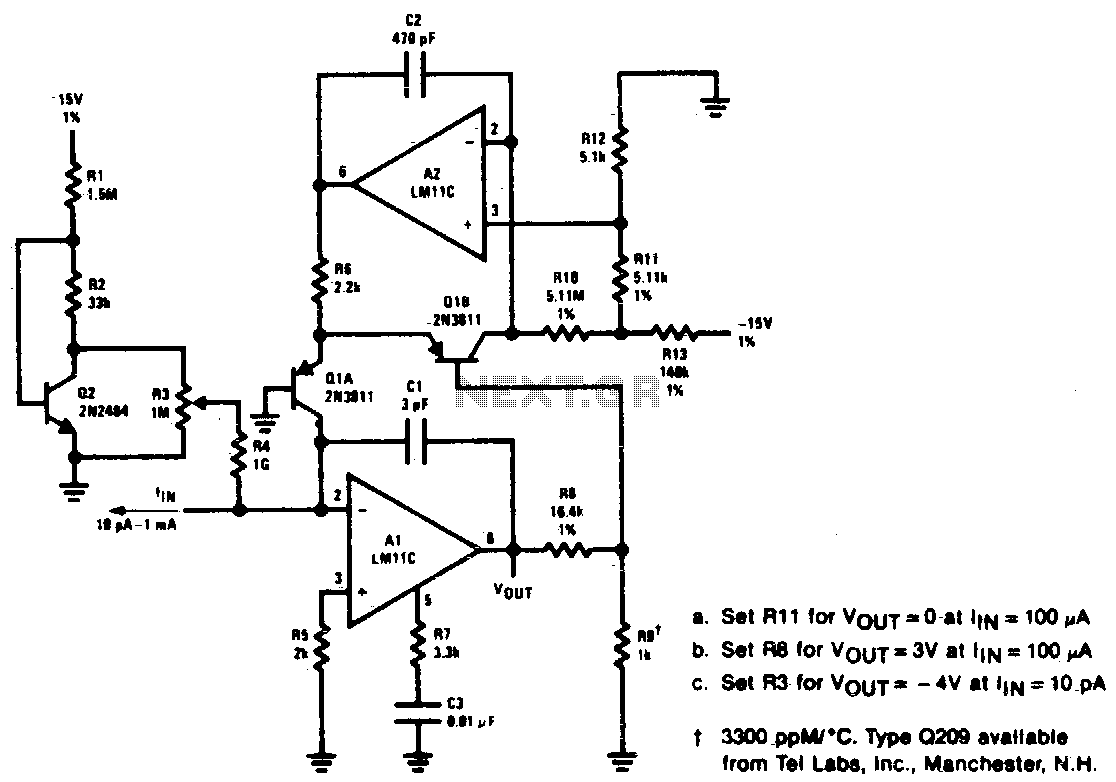
60 Watt Bass Amplifier

The circuit features low-cut and bass controls, with an output power of 40W into an 8 Ohm load and 60W into a 4 Ohm load. This design utilizes a well-established circuit topology for the power amplifier.
The described circuit is a power amplifier designed to deliver high-quality audio output with adjustable low-cut and bass controls. The low-cut control allows users to filter out unwanted low-frequency signals, which can enhance clarity and reduce distortion in the audio output. The bass control provides the ability to boost or attenuate low-frequency signals, allowing for customization of the audio experience based on personal preference or specific acoustic environments.
The output power specification indicates that the amplifier can deliver 40W into an 8 Ohm load, which is typical for consumer audio applications, ensuring compatibility with standard speakers. Additionally, the capability to provide 60W into a 4 Ohm load suggests that the amplifier can drive lower impedance speakers effectively, delivering more power and potentially higher sound levels without distortion.
The circuit topology employed in this design is likely to be a Class AB amplifier configuration, which is favored for its balance between efficiency and sound quality. This topology allows for a linear amplification of audio signals, minimizing crossover distortion while providing sufficient output power. Key components of the circuit may include transistors for amplification, resistors for biasing, capacitors for coupling and decoupling, and potentiometers for user-adjustable controls.
Overall, this power amplifier design is well-suited for a variety of audio applications, from home audio systems to professional sound reinforcement, providing both flexibility in sound shaping and reliable performance across different load impedances.Low-cut and Bass controls, Output power: 40W into 8 Ohm and 60W into 4 Ohm loads This design adopts a well established circuit topology for the power ampl.. 🔗 External reference
The described circuit is a power amplifier designed to deliver high-quality audio output with adjustable low-cut and bass controls. The low-cut control allows users to filter out unwanted low-frequency signals, which can enhance clarity and reduce distortion in the audio output. The bass control provides the ability to boost or attenuate low-frequency signals, allowing for customization of the audio experience based on personal preference or specific acoustic environments.
The output power specification indicates that the amplifier can deliver 40W into an 8 Ohm load, which is typical for consumer audio applications, ensuring compatibility with standard speakers. Additionally, the capability to provide 60W into a 4 Ohm load suggests that the amplifier can drive lower impedance speakers effectively, delivering more power and potentially higher sound levels without distortion.
The circuit topology employed in this design is likely to be a Class AB amplifier configuration, which is favored for its balance between efficiency and sound quality. This topology allows for a linear amplification of audio signals, minimizing crossover distortion while providing sufficient output power. Key components of the circuit may include transistors for amplification, resistors for biasing, capacitors for coupling and decoupling, and potentiometers for user-adjustable controls.
Overall, this power amplifier design is well-suited for a variety of audio applications, from home audio systems to professional sound reinforcement, providing both flexibility in sound shaping and reliable performance across different load impedances.Low-cut and Bass controls, Output power: 40W into 8 Ohm and 60W into 4 Ohm loads This design adopts a well established circuit topology for the power ampl.. 🔗 External reference
